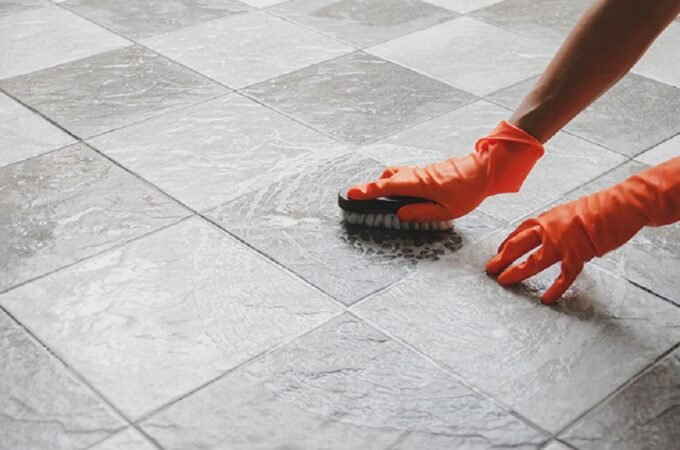
Cleaning Your Clothes Without a Kit: Effective Methods for dry cleaning at home
Are you faced with a pile of garments that require dry cleaning, yet the idea of venturing out to find a professional cleaner feels overwhelming? Discover the convenience of dry cleaning your clothes at home with simple methods that don’t rely on specialized kits. This article offers a comprehensive guide, unveiling effective techniques for safely washing and rejuvenating delicate items. From meticulous hand washing approaches to innovative steam freshening tactics, you’ll learn practical solutions to handle your wardrobe with ease.
Table of Contents
ToggleA Comprehensive Guide to Refreshing Your Clothes at Home
Love your fancy clothes but dread the dry cleaner’s trip? You’re not alone! Dry cleaning, while effective, can be inconvenient and expensive. But what if you could give your delicates the TLC they deserve right at home? This guide unlocks the secrets of DIY dry cleaning, empowering you to refresh your favorite garments with ease.
Fabrics, Labels, and Choosing Wisely
Before diving in, let’s understand what we’re working with. Dry cleaning uses special solvents to clean clothes without water. This is ideal for fabrics like wool, silk, and leather that can be damaged by regular washing.
Demystifying the Label: Every garment has a care label. Learn to decipher its symbols! Look for the “Dry Clean Only” tag – this is your green light for home dry cleaning. However, if it says “Dry Clean” with additional instructions, it’s best to leave it to the professionals.
Knowing your fabrics is key. Here’s a quick guide:
- Suitable for Home Dry Cleaning: Silk, wool, cashmere, linen (check label for specific instructions)
- Off-Limits: Leather, suede, fur (require professional cleaning)
Gearing Up: Your Home Dry Cleaning Arsenal
Essentials for Success:
- Dry Cleaning Kit (Optional): These kits come with cleaning cloths and solutions designed for home use.
- Laundry Detergent (For Handwashing): Opt for a gentle, pH-neutral detergent specifically for delicates.
- Spot Remover: Choose a product based on the stain type (oil-based, protein-based, etc.).
- Mesh Laundry Bags: Protect your garments during cleaning.
- Steamer or Iron: Perfect for reviving wrinkled items.
- Clean Towels: For drying clothes after handwashing.
Finding Your Supplies: Most supermarkets, grocery stores, and online retailers carry all the equipment you need.
Pre-Treatment: Banishing Those Pesky Stains
Stains are the enemy! Before tackling the whole garment, address stains first. Identify the culprit (oil, food, ink) and choose a suitable stain remover. Always test the product on an inconspicuous area of the clothing before applying it directly to the stain. Follow the product’s instructions carefully and act quickly for fresh stains. Remember, gentle scrubbing is better than harsh rubbing, which can damage the fabric.
Pro-Tip: Blot up excess liquid spills with a clean, absorbent cloth to prevent further spreading.
Methods for DIY Magic: Choosing Your Cleaning Adventure

There are two main approaches to home dry cleaning:
1. Dry Cleaning Kits: These kits typically involve placing your garment in a special bag along with a cleaning cloth. You then toss it in the dryer on a low heat setting for a designated time. This method is convenient but might not be suitable for all fabrics.
Step-by-Step:
- Pre-treat any stains.
- Place your garment in the dry cleaning bag provided in the kit.
- Add the cleaning cloth (if included).
- Follow the kit’s instructions for dryer settings and time.
- Remove and hang your garment to air dry completely.
Pros: Convenient, easy to use. Cons: Might not be as effective as professional cleaning, limited to specific fabrics.
2. Handwashing: This method offers more control over the cleaning process, making it ideal for delicate fabrics.
Step-by-Step:
- Fill a basin with cool water and a small amount of gentle detergent.
- Submerge your garment and gently swish it around for a few minutes. Avoid vigorous agitation.
- Rinse the garment thoroughly with cool water until the suds disappear.
- Gently squeeze out excess water (don’t wring!). Lay the garment flat on a clean towel and roll it up to absorb moisture.
- Unroll the towel and reshape the garment. Lay it flat to air dry away from direct sunlight.
Pros: Effective for delicate fabrics, allows for stain pre-treatment. Cons: Requires more time and effort.
The Steaming Solution: A steamer is a fantastic tool for refreshing clothes and removing wrinkles without ironing. Simply hold the steamer a safe distance from the garment and gently move it up and down.
Success Tips: Mastering the Art of Dry Cleaning at home
- Always check the care label! Never attempt home dry cleaning on a garment that specifically requires professional cleaning.
- Less is more: Use a minimal amount of detergent and avoid harsh chemicals.
- Temperature matters: Stick to cool or lukewarm water for handwashing. High heat can damage fabrics.
- Air drying is key: Avoid using clothes dryers on delicate garments. The high heat can cause shrinkage and damage.
Troubleshooting Common Issues (VII)
- Shrinking: This can happen if you use hot water or a high heat setting during drying.
- Solution: Use cool water for handwashing and air dry garments.
- Prevention: Always check the care label for recommended drying methods.
- Color Fading: Harsh chemicals or excessive sunlight can cause fading.
- Solution: Use gentle detergents and air dry clothes in a shaded area.
- Prevention: Pretest stain removers on a hidden area before applying them directly to the stain.
- When to Seek Professional Help:
- Extensive stains you can’t remove.
- Garments with intricate embellishments.
- Fabrics requiring specialized cleaning methods (leather, suede).
Environmental Impact and Sustainability
- Home Dry Cleaning vs. Professional Cleaning:
- Home: Uses less energy (no transportation required), potentially reduces reliance on harsh chemicals.
- Professional: May use harsh chemicals that contribute to air and water pollution.
- Eco-Friendly Alternatives:
- Use biodegradable detergents.
- Opt for natural stain removers (lemon juice, vinegar).
- Air dry clothes whenever possible.
- Responsible Disposal:
- Dispose of used dry cleaning clothes according to the manufacturer’s instructions.
- Consider refillable dry cleaning kits to minimize waste.
Home Dry Cleaning FAQs: Busting Your Myths!
Q: Can I ditch the kit and still dry clean at home?
Absolutely! While kits offer convenience, there are plenty of effective, kit-free methods to refresh your clothes. From stain-busting solutions to steam magic, you have options!
Q: What are some winning home dry cleaning techniques?
- Vinegar Power: Mix equal parts white vinegar and water, mist problem areas, and brush or blot away residue. This tackles light stains and odors.
- Steam It Up: Don’t have a steamer? Hang clothes in a steamy bathroom during a hot shower, or use an iron on low steam to remove wrinkles and freshen fabrics.
- Spot Treatment Heroes: Specialized cleaners tackle specific stains. Remember to test them on an inconspicuous area first to avoid surprises!
Q: Can I go DIY with vinegar dry cleaning?
Sure can! Just mix equal parts white vinegar and water in a spray bottle. Gently mist the garment’s trouble spots, then brush or blot away any residue. Remember, a gentle touch is key!
Q: Steamer-less steaming – is it possible?
You bet! Hang your clothes in the bathroom while taking a hot shower. The steam will work its magic, relaxing wrinkles and reviving your clothes. Alternatively, use an iron set to low steam for a quick refresh.
Q: Are there any risks to home dry cleaning?
While generally safe, always read care labels first. Before applying any cleaning method, test it on a hidden area of the garment to ensure it won’t damage the fabric or cause color bleeding.
Conclusion
In conclusion, dry cleaning your clothes at home is an efficient and practical way to keep them clean and fresh without the hassle of visiting a professional cleaner. By following the tips and guidelines outlined in this article, you can successfully clean your clothes at home and enjoy the many benefits of DIY dry cleaning. So why not give it a try? Your wardrobe will thank you for it!






